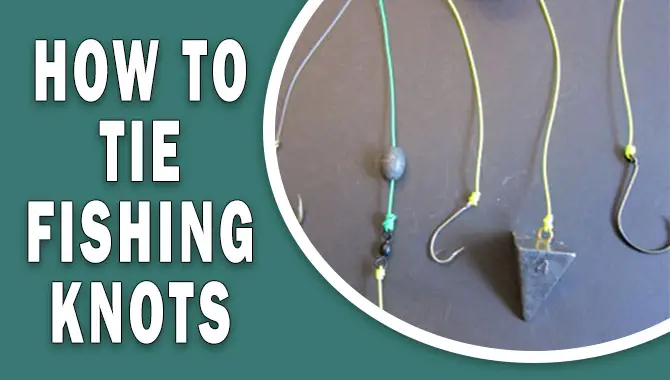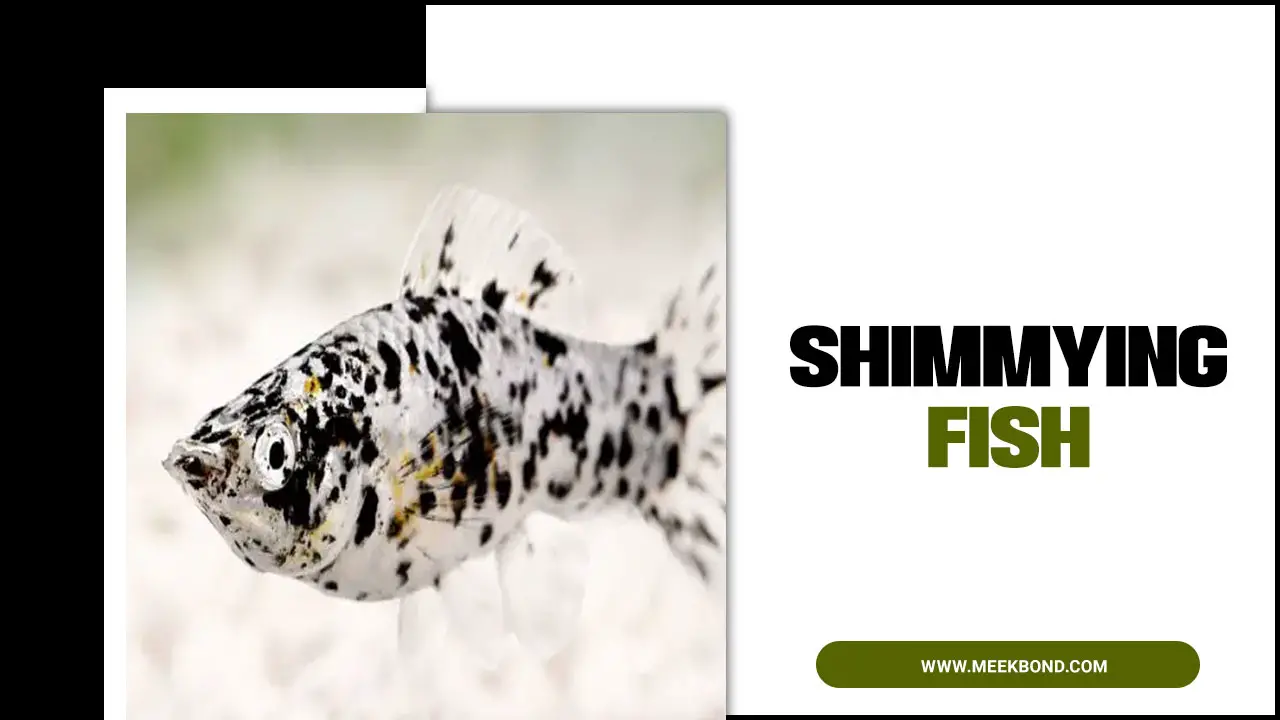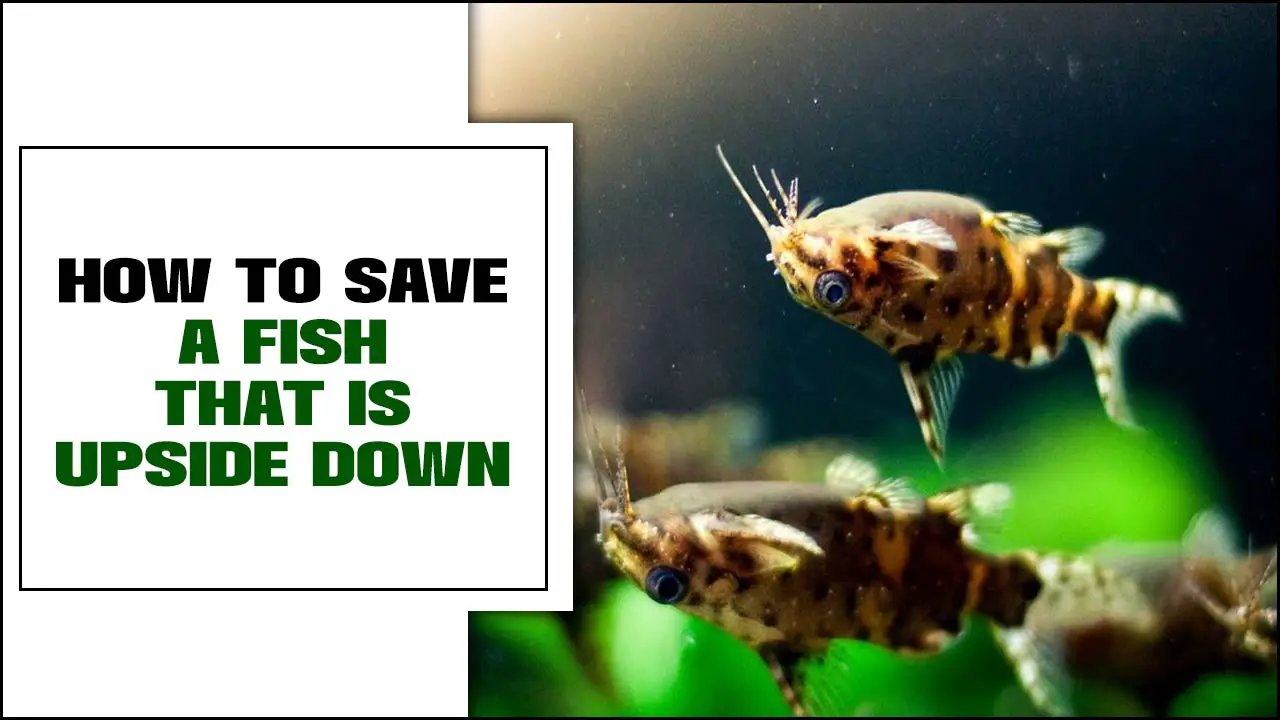As fish enthusiasts, one of the most exciting aspects of having an aquarium is the opportunity to add a variety of fish to your tank.
One type of fish that has become increasingly popular in recent years is the Pleco. Also known as the suckerfish, these freshwater fish are known for their distinctive appearance and ability to keep a tank clean by eating algae. However, with over 150 species of Plecos, it can be difficult to identify which type of fish you have in your tank. That’s where a Pleco identification chart comes in handy.
A Pleco identification chart is a visual guide that helps you identify the different types of Plecos based on their distinct physical characteristics. It can be quite challenging to differentiate between various species of Plecos, especially for those who are new to the hobby.
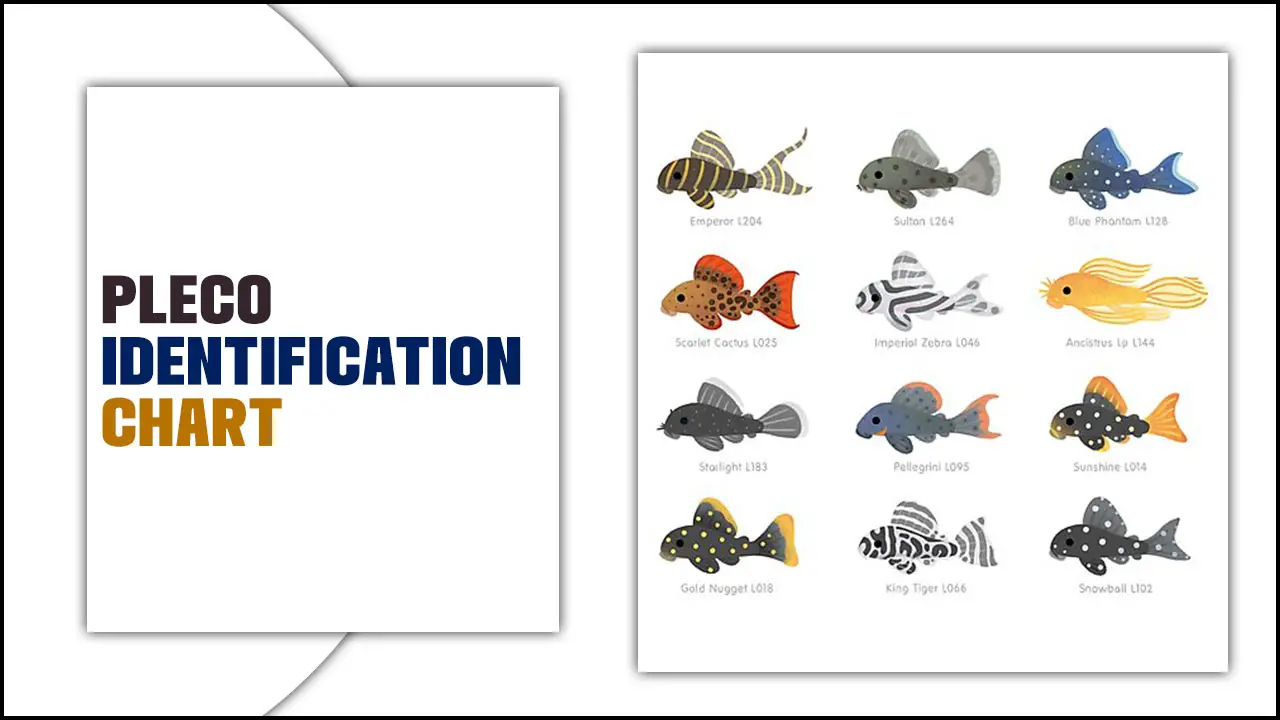
List Of Pleco Identification Chart
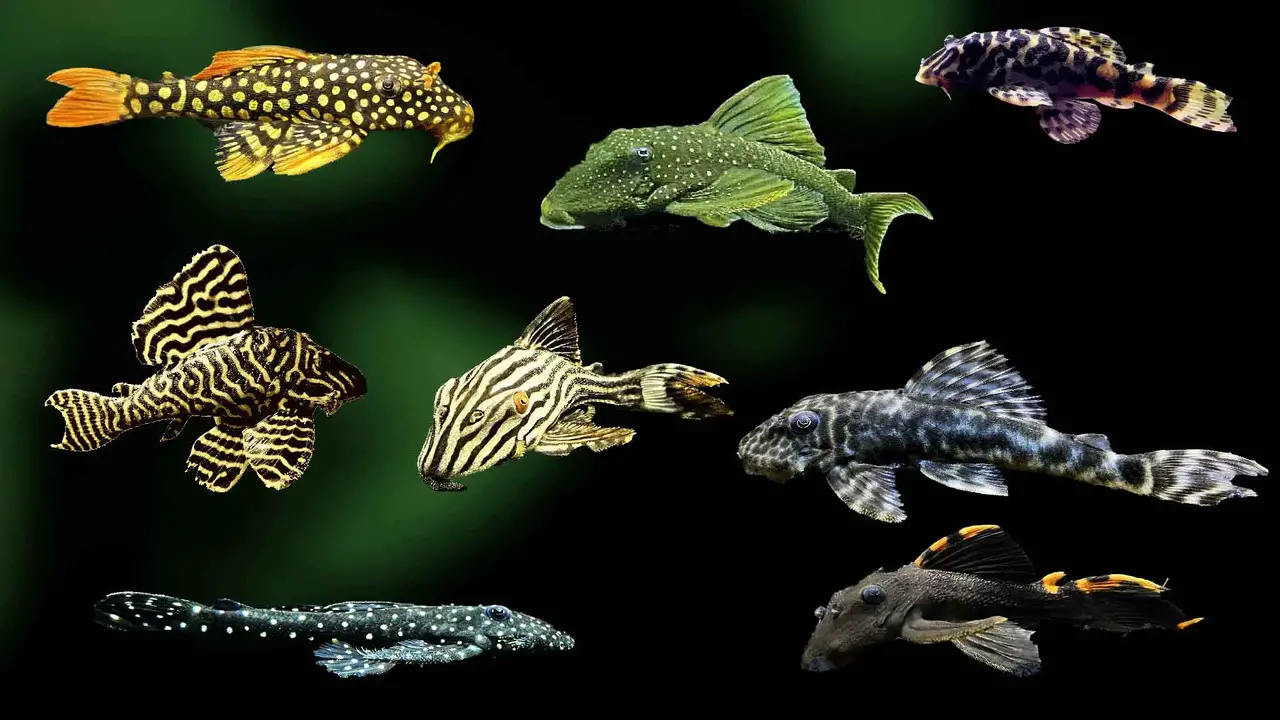
Here is a list of popular types of plecos: Bristlenose, Clown, Royal, Sailfin, and Albino. You can identify them by their physical features such as size, color, body shape, fin shape, and mouth shape. Understanding their behavioral characteristics like feeding habits, hiding places, and swimming patterns can also help with identification.
When identifying a pleco, you can contact online resources such as forums, social media groups, and specialized websites for assistance. Here is a pleco identification chart to help you identify different types of plecos:
| Pleco Species | Identification Characteristics |
| Bristlenose Pleco (Ancistrus sp.) | Has prominent bristles on the head |
| Common Pleco (Hypostomus plecostomus) | Large size, flat body, and distinctive sail-like dorsal fin |
| Clown Pleco (Panaqolus maccus) | Dark body with light colored spots or stripes |
| Rubber Lip Pleco (Chaetostoma sp.) | Thick lips and a mottled brown or gray body |
| Zebra Pleco (Hypancistrus zebra) | Black body with striking white stripes |
| Gold Nugget Pleco (Baryancistrus sp.) | Yellow or gold coloration with small spots |
| Royal Pleco (Panaque nigrolineatus) | Dark body with white or yellow lines running horizontally |
These are just a few examples of the many types of plecos available in the aquarium trade. Each type has unique characteristics and care requirements, so it’s important to research before bringing one home.
Top 15 Types Of Plecos
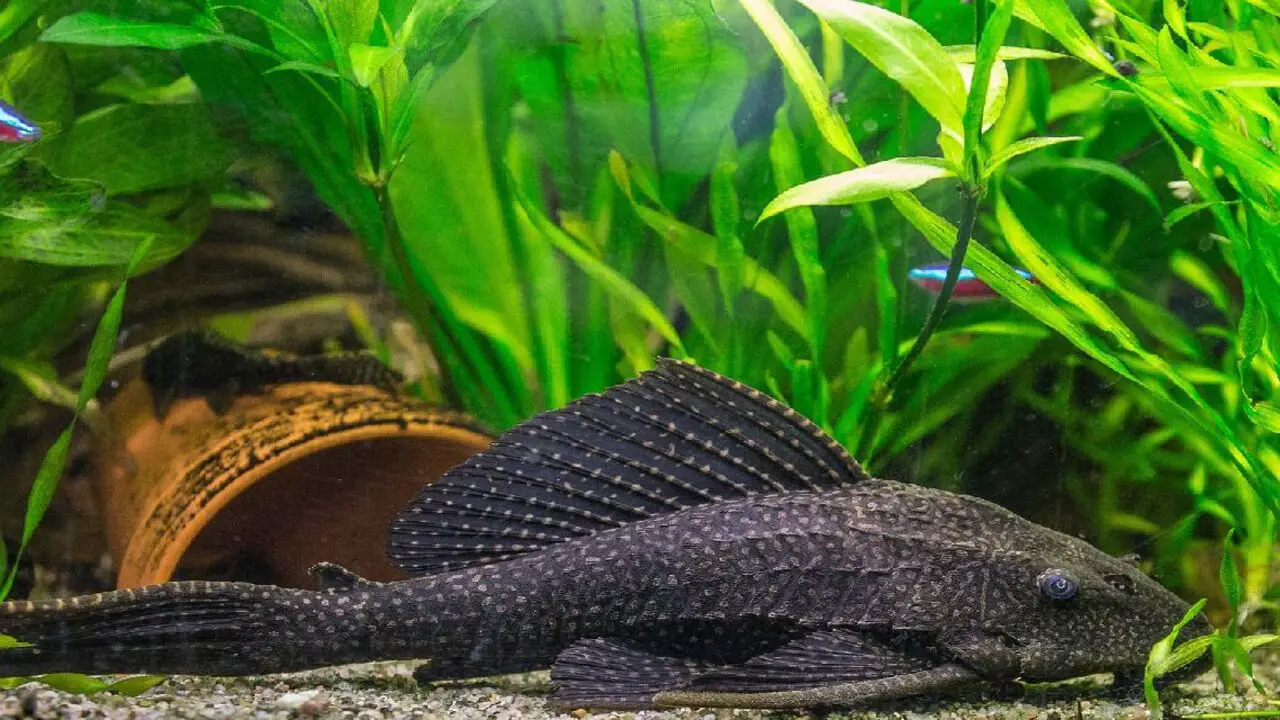
Plecos, a popular freshwater fish, come in various shapes, sizes, and colours. The top 15 pleco types are the bristlenose, Clown, Royal, and Snowball Plecos. Here is an important chart table of the top 15 types of plecos:
| Pleco Type | Scientific Name | Common Name |
| 1 | Pterygoplichthys pardalis | Leopard pleco |
| 2 | Hypostomus plecostomus | Common pleco |
| 3 | Ancistrus sp. | Bristlenose pleco |
| 4 | Panaque nigrolineatus | Royal pleco |
| 5 | Hypancistrus zebra | Zebra pleco |
| 6 | Panaque cochliodon | Clown pleco |
| 7 | Panaque armbrusteri | Titan pleco |
| 8 | Peckoltia vittata | L-15 pleco |
| 9 | Hypancistrus contradens | L-201 pleco |
1.Bristlenose Pleco (Ancistrus Cirrhosus)
The Bristlenose Pleco (Ancistrus cirrhosus) is a popular small freshwater fish that many aquarium owners love to keep. This species stands out with its flattened body shape, bristly appearance, and sucker mouth. One of the reasons why this fish is so popular is its hardiness, as it can tolerate a wide range of water conditions.
Also, the Bristlenose Pleco is a herbivorous fish that enjoys snacking on algae, making it a great addition to any aquarium as it helps keep the tank clean. Additionally, this species is known for its peaceful nature, allowing it to coexist harmoniously with other fish species in a community tank.
2.Clown Pleco (Panaqolus Marcus)
Clown Pleco, scientifically known as Panaqolus Marcus, is a small and peaceful fish species that can reach a maximum length of 3 inches. They are relatively easy to care for and thrive in aquariums with plenty of hiding places.
Clown Plecos primarily feed on algae, but they also enjoy sinking pellets and vegetables. One distinctive feature of Clown Plecos is their unique pattern of dark spots on a light-coloured body, making them quite easy to identify.
These delightful fish are compatible with the most peaceful tank mates and can add personality to any aquarium. With their playful nature and attractive appearance, Clown Plecos are a great community tank addition. Whether a beginner or an experienced aquarist, having a Clown Pleco in your aquarium can bring joy and vibrancy to your underwater world.
3.Gold Nugget Pleco (Baryancistrus Sp.)
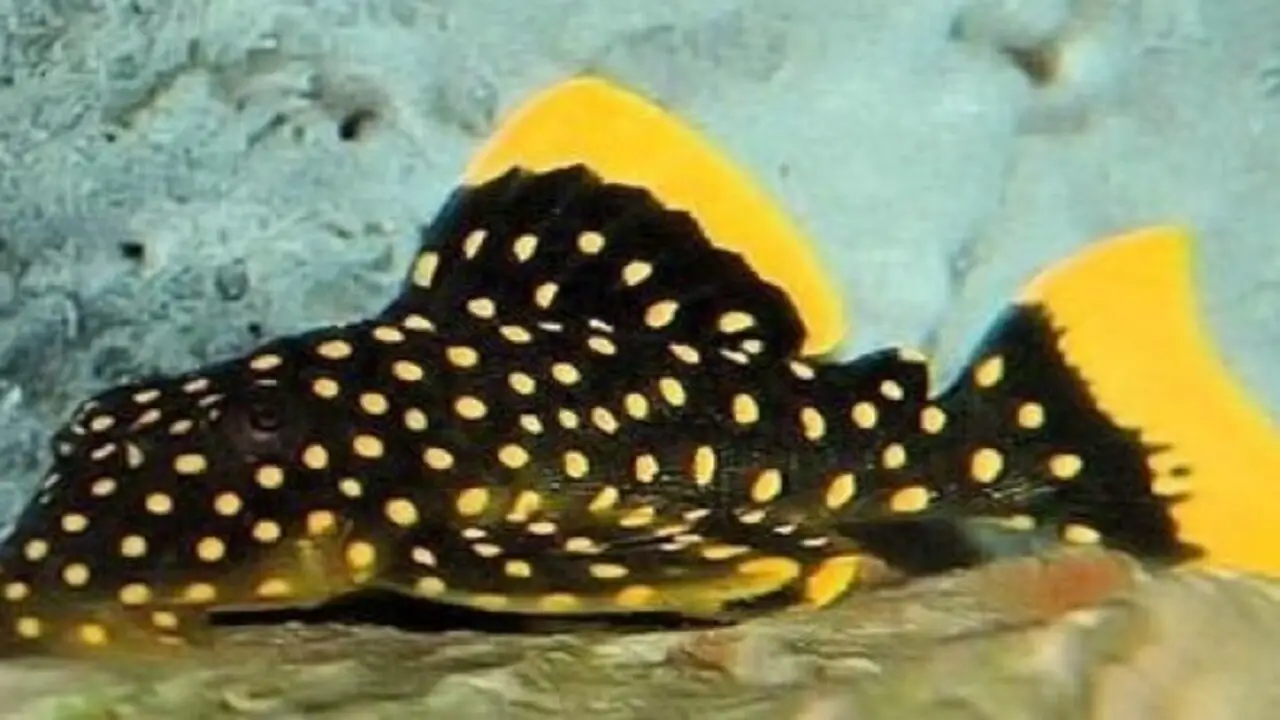
The Gold Nugget Pleco, also known as Baryancistrus sp., is a visually striking fish with a bright yellow-gold body adorned with a unique pattern of black spots. These plecos are predominantly active at night and seek refuge in caves and crevices during the day.
Providing clean, well-oxygenated water within a pH range of 6.5 to 7.8 is important to ensure their well-being. As omnivores, they require a balanced diet that includes algae, vegetables, and meaty foods. Creating hiding places and incorporating driftwood into the aquarium is crucial to meet their comfort needs. Following these guidelines can provide an optimal environment for your Gold Nugget Pleco.
4.Royal Pleco (Panaque Nigrolineatus)
The Royal Pleco, also known as Panaque nigrolineatus, is a stunning freshwater fish native to South America. With its black and white striped pattern, it adds a touch of elegance to any aquarium. Growing up to 15 inches in length, these herbivorous fish primarily feed on algae and other plant matter.
A well-maintained tank with plenty of hiding places and clean water ensures their well-being. The Royal Pleco can live up to 20 years in captivity with proper care and diet. They are truly a majestic addition to any aquarium setup.
5.Snowball Pleco (Hypancistrus Inspector)
The Snowball Pleco, scientifically known as Hypancistrus inspector, is a popular freshwater aquarium fish recognized for its eye-catching white spots that contrast against its dark body. Originating from the Amazon River Basin in South America, these plecos typically dwell at the bottom of the tank, seeking refuge in hiding spots such as caves and driftwood.
As omnivores, they require a diverse diet of algae, vegetables, and meaty foods to thrive. Maintaining proper water conditions, including pH and temperature, is crucial for the well-being of Snowball Plecos. Aquarists can ensure these captivating fish species’ health and vibrant appearance by providing them with a suitable environment and a balanced diet.
6.Zebra Pleco (Hypancistrus Zebra)
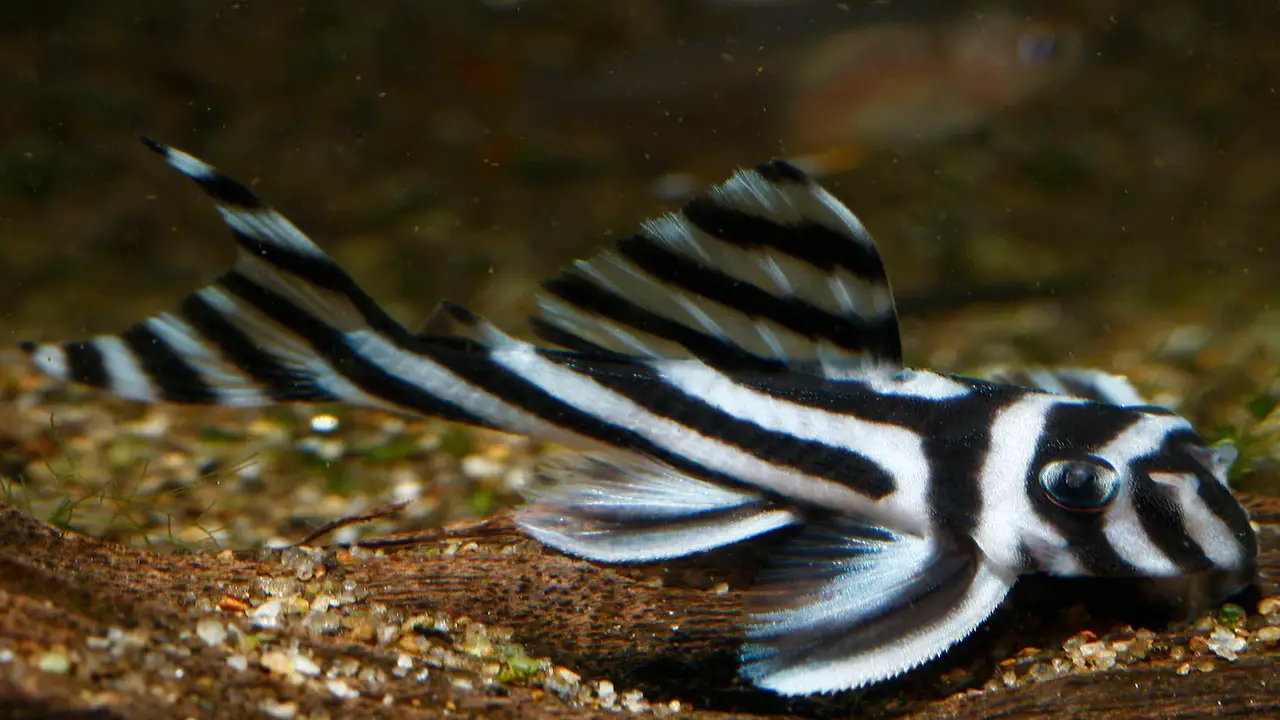
The Zebra Pleco (Hypancistrus zebra) is a small species of pleco known for its distinctive black and white stripes. Indigenous to Brazil’s Rio Xingu, these fish are commonly found in home aquariums. To thrive, they require a high-protein diet and well-oxygenated, well-filtered water. Due to their rarity, they can be quite expensive to obtain.
It is crucial to research and understand their care requirements before adding them to your tank. With their unique striped appearance and specific dietary needs, Zebra Plecos make a fascinating addition to any aquarium. Ensure your tank provides ample hiding places and suitable conditions to support their well-being.
7.Leopard Frog Pleco (Chaetostoma Formosae)
The Leopard Frog Pleco (Chaetostoma Formosa) is a stunning type of pleco with a distinctive black and white spotted pattern. Native to the rivers and streams of South America, these plecos require a well-maintained aquarium with plenty of hiding spots, such as caves or driftwood.
As herbivores, they should be fed a diet rich in algae, vegetables, and sinking pellets. In the aquarium, Leopard Frog Plecos are known for their peaceful nature and ability to get along with other fish. With their unique markings and peaceful demeanour, these plecos are a beautiful addition to any freshwater aquarium.
8.Blue Phantom Pleco (L128 – Hemiancistrus Sp.)
The Blue Phantom Pleco, scientifically known as Hemiancistrus sp., is a popular freshwater fish with a captivating blue-black colouration. This pleco species, native to South America, derives its name from the dark spots on its body that resemble a starry night sky. With its unique appearance, the Blue Phantom Pleco adds a touch of elegance to any aquarium.
One notable characteristic of these plecos is their low-maintenance nature, making them an excellent choice for experienced and beginner aquarists. As herbivores, they require a tank with abundant vegetation to graze on.
It is also important to note that Blue Phantom Plecos are nocturnal, so providing numerous hiding places during the day is essential. Adhering to these care requirements can create a thriving environment for these mesmerizing fish.
9.Red Finned Cactus Pleco (L025 – Pseudacanthicus Sp.)
The red-finned cactus pleco is a highly sought-after species among aquarium enthusiasts due to its vibrant colouration and unique fin shape. Native to the Amazon River basin, this pleco requires a well-maintained aquarium environment to thrive.
Primary herbivores need a varied diet consisting of algae, vegetables, and supplements. The L025 classification indicates that this pleco belongs to the Pseudacanthicus genus, adding to its allure. With its eye-catching appearance, the red-finned cactus pleco is easily recognizable and can be a stunning addition to any aquarium. Aquarists can enjoy the beauty and charm of this remarkable fish species by providing the right conditions and diet.
10.Emperor Pleco (L204 – Panaque Sp.)
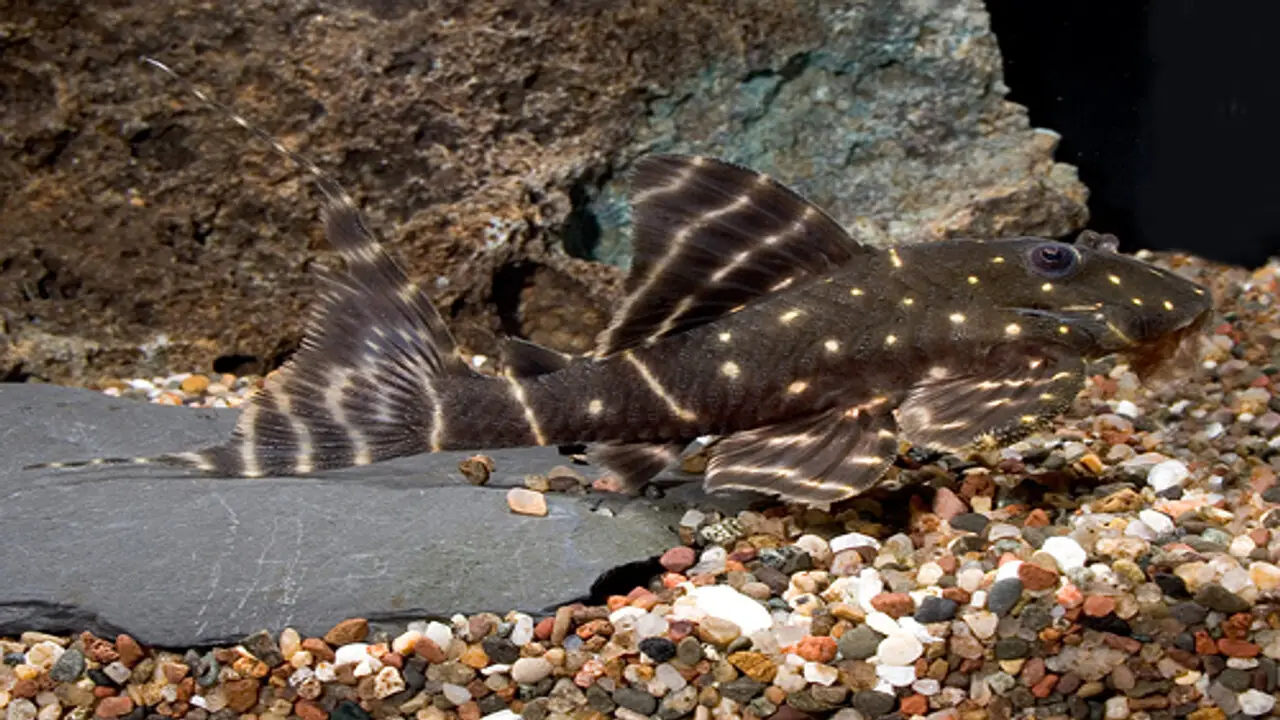
Due to its unique appearance, Emperor Pleco, also known as L204 – Panaque sp., is a highly sought-after species among aquarists. Native to the Amazon basin, these plecos require a large aquarium with plenty of hiding spots for optimal care. Sporting a distinctive black and white striped pattern, they are easily recognizable.
Emperor Plecos also have bushy, bristle-like mouthparts that add to their charm. As herbivores, they thrive on a varied diet of vegetables and algae wafers. It is crucial to properly identify Emperor Plecos to ensure they receive the appropriate care and attention they need. Aquarists can enjoy the beauty and elegance of these fascinating fish by providing them with a suitable environment and diet.
11.Sunshine Pleco (L014 – Scobinancistrus Aureatus)
The Sunshine Pleco, also known as the Golden Pleco or Goldie Pleco, is a popular species sought after by many aquarium enthusiasts. Its distinctive golden colouration sets it apart from other plecos, making it a visually striking addition to any tank.
Growing up to 10 inches in length, the Sunshine Pleco requires a large tank with plenty of hiding spots to provide them with a comfortable environment. This omnivorous species feeds on various foods, including algae, vegetables, and small crustaceans. Proper research and care are essential to ensure the health and longevity of these beautiful fish.
12.Vampire Pleco (L330 – Leporacanthicus Joselimai)
The Vampire Pleco (L330 – Leporacanthicus joselimai) is a captivating fish species with a fascinating and enigmatic appearance. It earns its name from its sharp, vampire-like teeth that resemble those of a bat. These unique features make the Vampire Pleco highly sought-after among aquarists. Despite its small size, reaching only up to 6 inches in length, this pleco species packs a punch in terms of visual appeal.
Creating a suitable habitat for these fish requires a well-planted tank with plenty of hiding spots to mimic their natural environment. It’s also important to provide them with a proper diet and ensure regular water changes to maintain optimal water conditions. The Vampire Pleco is an intriguing addition to any aquarium setup, bringing a touch of mystery and allure.
13.Green Phantom Pleco (L200 – Hemiancistrus Subviridis)
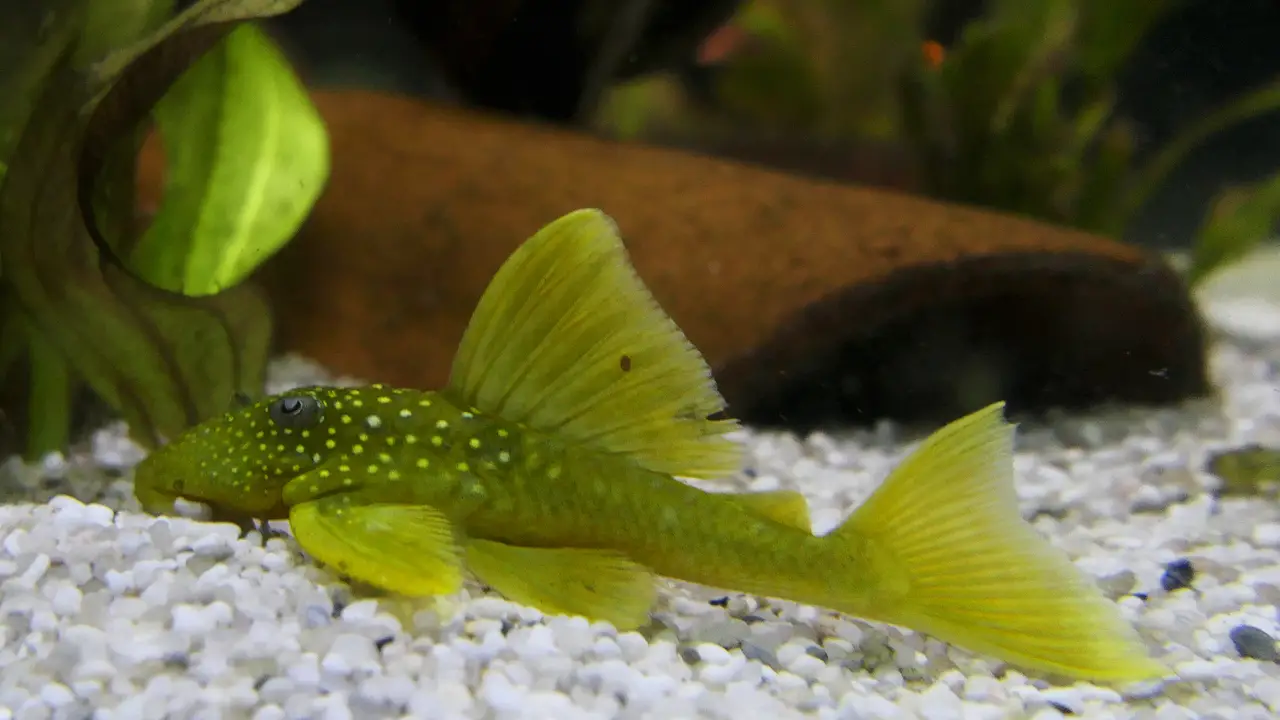
The Green Phantom Pleco, also known as L200 or Hemiancistrus subviridis, is a vibrant freshwater fish species native to South America. With its striking greenish-brown hues and unique white stripes, this pleco is a stunning addition to any aquarium. Green Phantom Plecos thrive in a pH range of 6.5 to 7.5 and a water temperature of 73-82°F.
Herbivores require a well-balanced diet of plant-based food to maintain optimal health. These fish are best suited for tank sizes of 30 gallons or more and benefit from a good filtration system to keep their environment clean. By providing the right conditions and care, aquarists can enjoy the beauty and unique characteristics of the Green Phantom Pleco in their own tanks.
14.Sultan Pleco (L264 – Pseudacanthicus Pitanga)
Sultan Plecos, also known as L264 or Pseudacanthicus pitanga, boast a captivating colouration of yellow and black. These stunning fish are relatively rare in the aquarium trade, making them a prized addition to any tank.
To keep these plecos happy and healthy, providing them with a well-filtered environment with plenty of hiding spaces is essential. As primarily herbivorous creatures, they thrive on a diet of vegetables and sinking pellets. With proper care and maintenance, Sultan Plecos can live up to 20 years in captivity, rewarding aquarists with their beauty for many years.
15.Golden Vampire Pleco (Lysmata Debelius)
The Golden Vampire Pleco, belonging to the Loricariidae family, boasts a captivating appearance with its distinctive golden-yellow colouration adorned with black spots. Typically reaching a size of up to 10 cm, this species prefers dimly lit aquariums enriched with driftwood and ample hiding places.
As primarily herbivorous beings, the Golden Vampire Pleco thrives on a diet supplemented with algae wafers and vegetables, ensuring their nutritional needs are met. With its unique aesthetic and preference for specific habitats, this species is a fascinating addition to any freshwater aquarium.
Tips For Using A Pleco Identification Chart Effectively
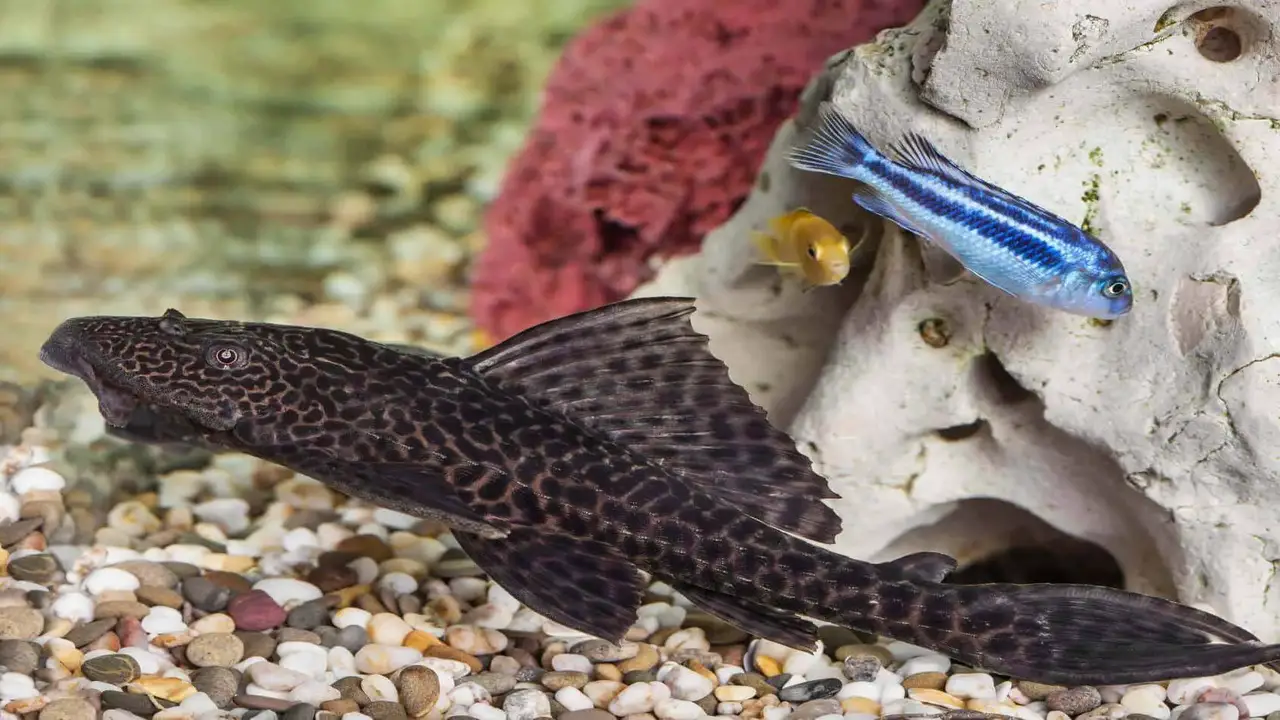
To effectively use a pleco identification chart, ensure that the chart you’re using is specific to the type of pleco you’re trying to identify. Carefully examine the markings and patterns on your fish and compare them with the chart. Also, pay attention to the shape and size of your pleco, as these can be significant identifying features.
It’s always a good idea to consult multiple sources, such as online forums or aquarium books, to confirm your identification. Remember that some plecos can change their appearance as they mature, so it’s important to continuously monitor and update your identification. By following these tips, you’ll have a better chance of accurately identifying your pleco.
Conclusion
A pleco identification chart is a valuable tool for fish enthusiasts and aquarium owners. With so many species of plecos available, it can be challenging to identify the type of pleco you have or are interested in getting. A pleco identification chart provides detailed information and images of various pleco species, allowing you to accurately identify the plecos in your tank or choose the right one for your aquarium.
By referring to the chart, you can easily identify and differentiate between various types of plecos, such as Bristlenose Pleco, Clown Pleco, Gold Nugget Pleco, and more whether a beginner or an experienced aquarist, using a pleco identification chart can enhance your understanding and appreciation of these beautiful fish. So, next time you come across a pleco and want to know its specific species, don’t forget to consult a pleco identification chart for accurate information.
Frequently Asked Questions
How Do I Know What Kind Of Pleco I Have?
To identify your pleco, look for unique physical characteristics like colouration and fin size. Check and compare the scientific name with online references or fish identification guides. Consulting a fish expert or aquarium specialist can also help. Pay attention to habitat and behaviour for further identification assistance.
How Old Is A 1-Inch Pleco?
Determining the age of a 1-inch pleco can be challenging. Growth rates vary based on factors like diet and environment. On average, plecos live up to 15-20 years in captivity. It’s important to remember that size alone is not a reliable indicator of a pleco’s age.
What Is The Most Beautiful Pleco Fish?
Regarding beauty, pleco fish offer a wide range of options. Some visually stunning plecos include the Gold Nugget Pleco, Zebra Pleco, Orinoco Angel Pleco, Leopard Frog Pleco, and Yellow King Tiger Pleco. However, beauty is subjective, so choose a pleco that appeals to your preferences and tank requirements.
What Is The Difference Between A Pleco And A Bristlenose?
Plecos and Bristlenose are both types of catfish commonly kept in aquariums. However, there are some key differences between them. Plecos are larger with an elongated body shape, while Bristlenose are smaller and have a more flattened body shape. Bristlenose also has distinctive tentacle-like appendages around their mouth, which plecos do not have.
How Can I Tell The Difference Between A Female And A Male Pleco?
To determine the gender of a pleco, examine its genital papilla. Males have a longer, pointed papilla, while females have a shorter, rounder one. Other differences may include size and fin shape. If unsure, consult a veterinarian or experienced aquarist.

Aquarium passion is all about connecting with the aquatic life and providing education to the public on the importance of these creatures. We showcase a wide variety of marine life through our exhibits as well as working with schools to provide unique learning opportunities for students of all ages.


